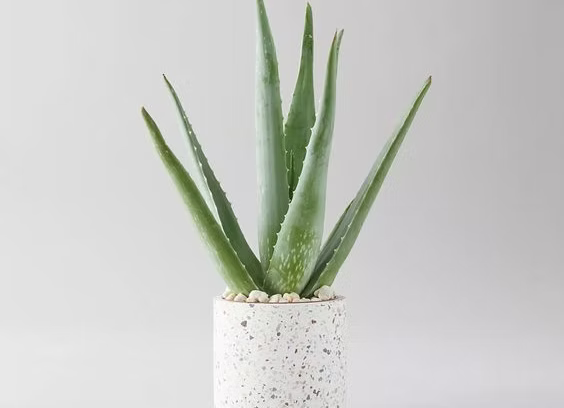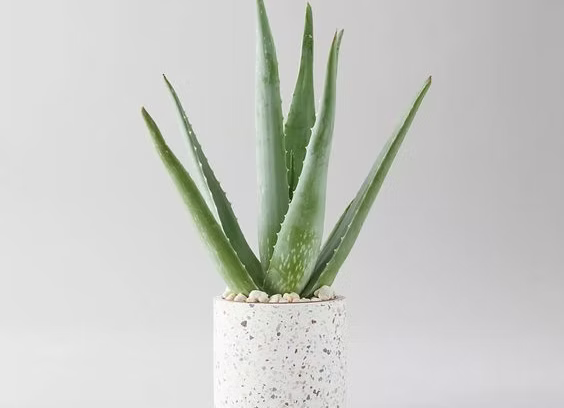Cacto
Aloe Plant Care: Essential Tips for Thriving Aloe Plants
Aloe Plant Care: Essential Tips for Thriving Aloe Plants
Couldn't load pickup availability
Aloe Plant Care: Essential Tips for Thriving Aloe Plants
When it comes to aloe plant care, successfully nurturing these resilient succulents can enhance your indoor or outdoor garden, offering not only aesthetic appeal but numerous health benefits. Aloe vera plants are renowned for their air-purifying qualities and healing properties, making them a popular choice among plant enthusiasts and those seeking natural remedies.
Understanding the specific needs of your aloe plants is crucial to their success. From light requirements to soil types, here are essential tips that will ensure your aloe plants thrive for years to come.
Understanding Aloe Plants
Aloe plants are not just beautiful green additions to your space; they are hardy and can store water in their leaves. These succulent plants are native to arid regions and are well-adapted to survive with minimal water. Familiarizing yourself with basic aloe plant care guidelines can make all the difference.
Optimal Lighting Conditions
One of the most important aspects of aloe plant care is providing adequate light. Aloe plants thrive in bright, indirect sunlight. Here are some lighting tips:
- Place your aloe plant near a south or west-facing window for optimal sunlight exposure.
- Rotate the plant every few weeks to ensure even growth.
- Avoid placing your aloe in direct, harsh sunlight, which can scorch its leaves.
- If indoors, consider using grow lights if natural light is insufficient.
Soil Needs: Choosing the Right Mix
The right soil can make a significant impact on your aloe plant's health. The ideal soil for aloe vera should be well-draining to prevent root rot. Here’s what to consider:
- Use a cactus or succulent potting mix, which provides the proper drainage.
- Consider adding perlite or sand to enhance drainage further.
- Ensure the pot has drainage holes to allow excess water to escape.
- Avoid heavy soils that retain moisture.
Watering Your Aloe Plant
Aloe plants require minimal watering, but understanding their specific water needs is a key part of aloe plant care. Here are the best practices:
- Water only when the top 2-3 inches of soil are dry to the touch.
- During the growing season (spring and summer), water more frequently, but be cautious of overwatering.
- Reduce watering in fall and winter as the plant enters dormancy.
- Always water at the base of the plant to prevent excess moisture accumulation on the leaves.
Temperature and Humidity
Aloe plants thrive in a warm environment, typically between 60-75°F (15-24°C). Pay attention to temperature and humidity to create an ideal setting:
- Keep your aloe plant indoors during cold winter months, especially in regions where temperatures drop below 50°F (10°C).
- Aloe prefers low humidity levels, making them suitable for indoor conditions.
- Avoid placing your plant near heating vents or drafts.
- If your indoor space is too humid, consider using a dehumidifier.
Fertilizing: Finding the Right Balance
Feeding your aloe plant properly can promote healthy growth. Here are some fertilization tips for effective aloe plant care:
- Use a diluted, balanced fertilizer during the growing season.
- Opt for a fertilizer designed for succulents and cacti.
- Avoid fertilizing during the dormant period in fall and winter.
- Over-fertilization can cause root burn, so always follow label directions.
Signs of a Healthy Aloe Plant
Recognizing the signs of a thriving aloe plant can reassure you that you are on the right track with your aloe plant care. Healthy aloe leaves should be:
- Plump and firm, indicating adequate moisture levels.
- A vibrant green color; yellowing can signal overwatering.
- Free of pests and significant brown spots caused by overexposure to sunlight.
- Growing regularly during the active growing season without stretching excessively.
Repotting Your Aloe Plant
As your aloe plant grows, it may outgrow its pot. Repotting is an essential aspect of aloe plant care to promote healthy growth. Follow these steps:
- Choose a pot that is slightly larger than the current one, ensuring it has drainage holes.
- Gently remove the plant from its old pot and loosen any tightly bound roots.
- Add fresh potting mix, filling around the roots, and ensure the plant sits at the same depth as before.
- Water the repotted aloe lightly and allow it to adjust.
Common Problems and Solutions
Even with the best aloe plant care practices, you may encounter issues. Here are some common problems and their solutions:
- Yellow Leaves: Typically a sign of overwatering. Allow the soil to dry completely before watering again.
- Brown Tips: This could indicate underwatering or too much direct sunlight. Adjust your watering schedule and light exposure.
- Pests: Occasional pest infestations can occur. Regularly check for signs of mealybugs or aphids, and treat with insecticidal soap as needed.
- Leggy Growth: This indicates insufficient light. Move your aloe closer to a light source or supplement with grow lights.
Final Thoughts on Aloe Plant Care
In summary, effective aloe plant care involves understanding the needs of your plant regarding light, soil, watering, temperature, and fertilization. By implementing these essential tips, you can enjoy a healthy and thriving aloe plant that enhances your living space and provides its myriad benefits.
Are you ready to elevate your indoor gardening game? Explore our premium selection of aloe plant care accessories today and give your aloe the home it deserves! Your lush, thriving aloe oasis awaits.
Share


